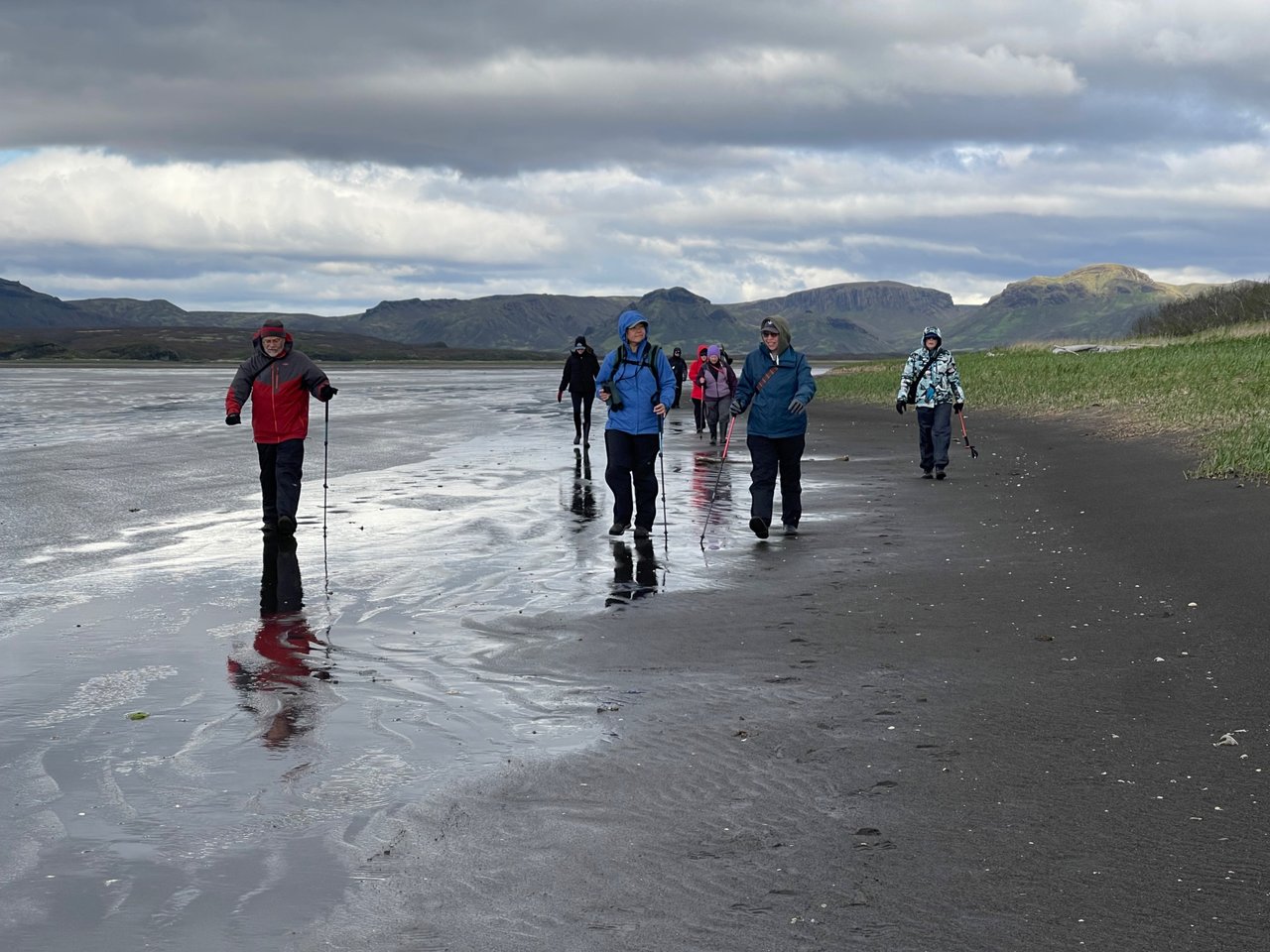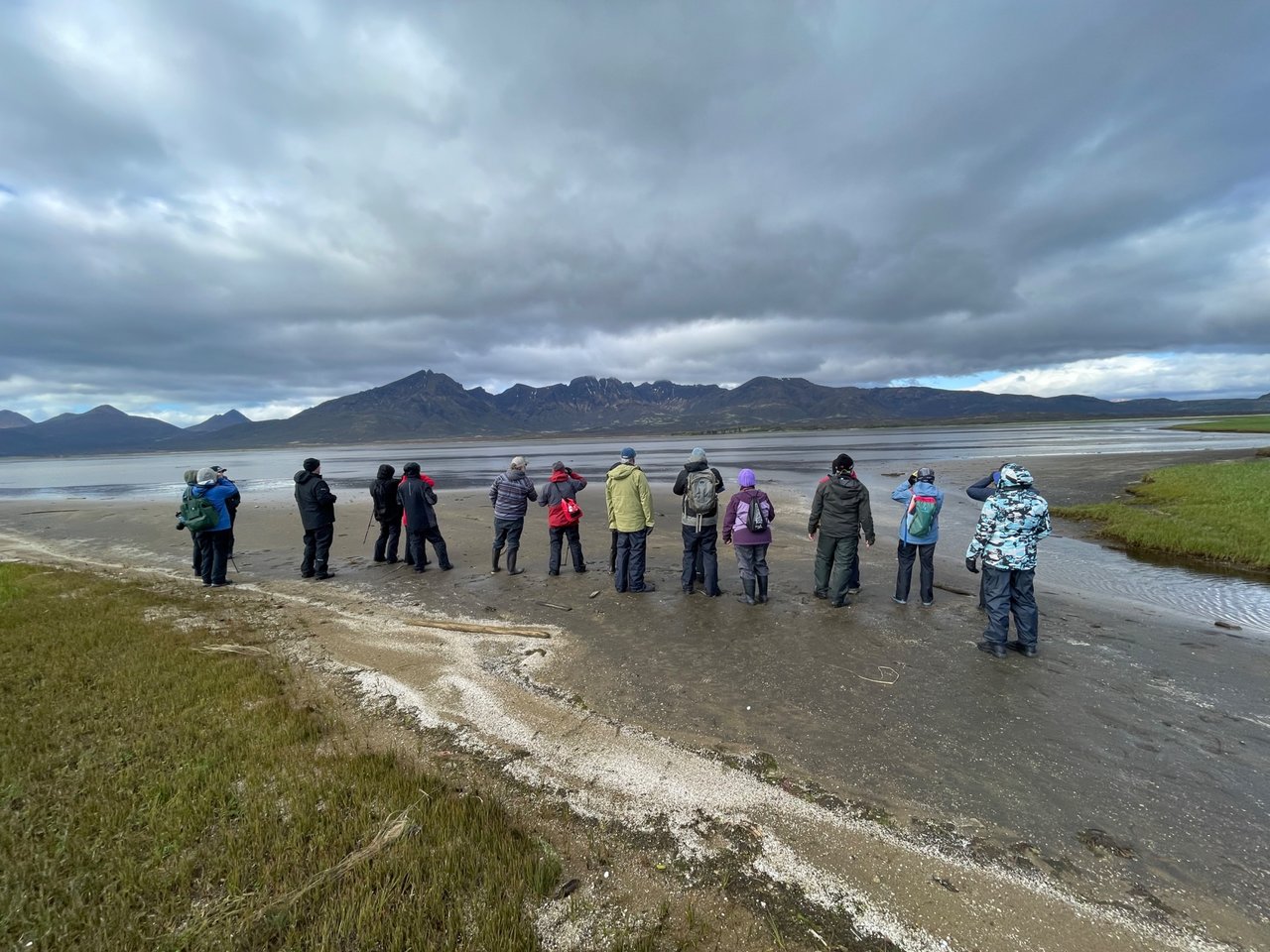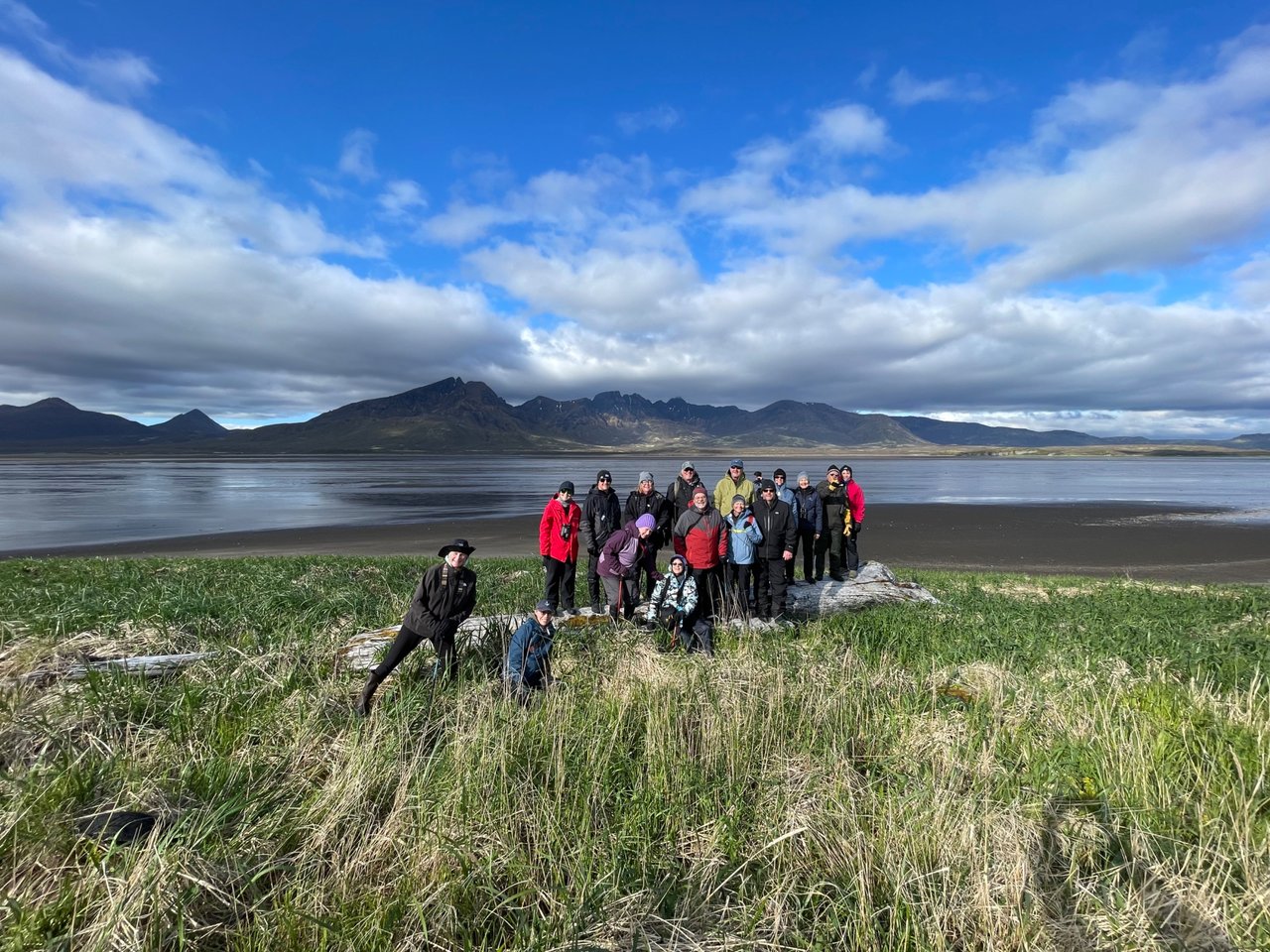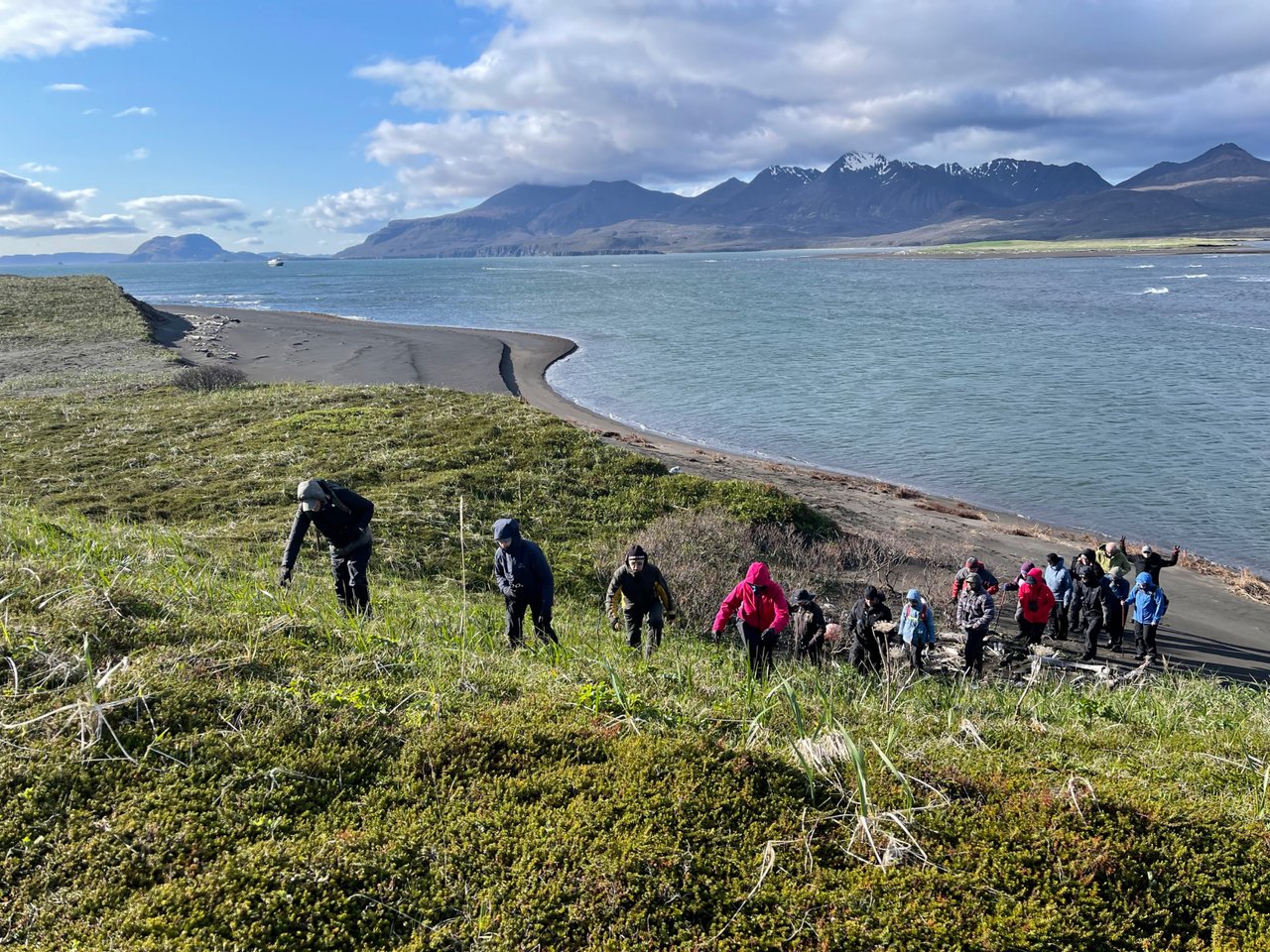Exploring the Remote Wilderness of Aniakchak National Monument and Preserve, Alaska

The estuary at Aniakchak Bay provided a reflective canvas for this photo of our hiking group, fast walking back after exploring deep into the valley.
On our expedition cruise along the Alaskan Peninsula, we pulled into a rugged, remote bay called Aniakchak Bay. This coastline is part of Aniakchak National Monument and Preserve, which is one of the National Park Systems least visited units, with less than 200 visitors yearly. Most of these visitors are fishing, hunting, or rafting up in the caldera of a huge, inland volcano. However, we are getting to explore the coast. There are no footprints on these beaches, except for the wildlife that came before us.
Aniakchack's wilderness is home to brown bears, moose, wolves, wolverines, fox, and caribou. Sea otters, seals, and all kinds of birds can be found out in the bay. There are no designated trails, campsites, or facilities here. We are truly in the wilderness. We sent out a beach walk over the black volcanic sand, a skiff tour, and a hard charger to explore deeper in the valley.
I led the hard charger, which was a very beautiful, and pretty easy walk. I did take the group up and over some of the dunes. We were walking in deep heather covered tundra. It was so deep that it almost felt like walking in snow. The group was happy to get back down to sea level, which made walking pretty fast. We entered a marsh flat, where we found our only pintail ducks, wigeons, and green wings teals of the trips. Deeper in the marsh we found a lone trumpeter or tundra swan, hard to tell which it was.
The big find was a huge, light colored brown bear, grazing on sedge grass across the estuary. It looked like he could easily run across the shallow mud flats, but he chose to continue eating and pay us no mind. After finding a good turnaround spot, we cruised back through the estuary, leaving impermanent tracks in the mud, while the sky reflected off the ground making it look like we were walking on clouds. I'm pretty sure that is how everyone felt, being able to experience this place that so few have ever experienced before.

Janet throws a wave as she walks through the estuary at low tide. Aniakchak Bay, Alaska.

I was surprised to find that the mud here was pretty dense. We could fast walk right across it. We did spot a bear, far on the other side of the estuary, but he kept minding his own business, eating sedge grass.

We walk for several miles, deep into the valley. We saw some very cool birds, including pintail ducks and a trumpeter swan, plus a big brown bear.

Aniakchak Bay is a very wide bay, with lots of opportunities for adventure.

This part of the estuary met up with salt marsh, filled with little ponds and streams, that were in turn, filled with migratory ducks.

John, scanning the salt marsh flats for animal life.

This is after I spotted a bear across the estuary.

I always get excited when the lupine starts blooming. It just adds so much color to the landscapes here.

Even though the weather was windy and very splashy, hence the spray in the picture, we had a wonderful time once we landed and explored Aniakchak Bay.

Guide Christian, doing a recon and checking out what the landings and hikes are like.

Our hiking group, posing for a group shot before continuing on with the adventure!

We climbed up several times to get better views of the inland area, and to look out for big furry animals.

Moose poop.... but where is the moose?

Climbing up the heather covered dunes after being dropped off by the skiffs. You can see the Safari Explorer anchored slightly offshore.

Fox prints.

Those are a bit bigger than fox prints.... A bear has been here recently.



Comments
Post a Comment
Leaving a comment is a great way to provide feedback, ask further questions, and inspire more answers...so go for it.